
Ready prompt T-shirts!
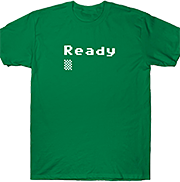
ZX Spectrum T-shirts!
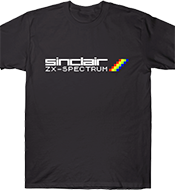
ZX81 T-shirts!
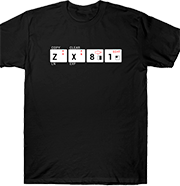
Atari joystick T-shirts!
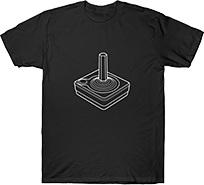
Spiral program T-shirts!
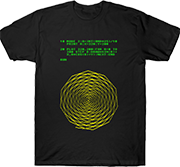
Arcade cherry T-shirts!
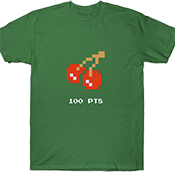
Battle Zone T-shirts!
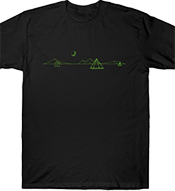
Vectrex ship T-shirts!

Elite spaceship t-shirt T-shirts!
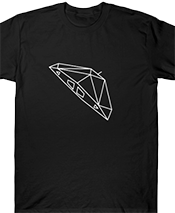
Moon Lander T-shirts!
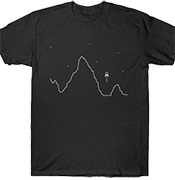
Atari ST bombs T-shirts!

C64 maze generator T-shirts!
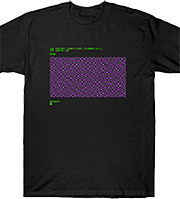
Competition Pro Joystick T-shirts!
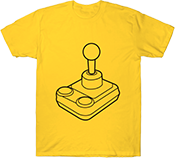
Pak Pak Monster T-shirts!

BASIC code T-shirts!

Vector ship T-shirts!

Pixel adventure T-shirts!
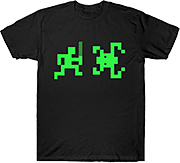
Breakout T-shirts!
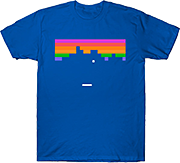

|
|

Welcome to old-computers.com, the most popular website for old computers.
Have a trip down memory lane re-discovering your old computer, console or software you used to have.
There are actually 1286 systems in the museum.
SHOW ME A RANDOM SYSTEM !
 LATEST ADDITIONS LATEST ADDITIONS
|
 ECD CORPORATION Micromind ECD CORPORATION Micromind
The Micromind was a very innovative machine ahead of its time ! But despite the small group working on the machine, prototyping and developing, and pushing the limits of the time, the machine never shipped. Apparently only a few prototypes were produced.
Development began as early 1975/1976 but commercial adverts appeared only in 1977.
One of the main features of the Micromind was its innovative (for the time) redefinable characters. Up to 120 characters could be software redefined by the ...
|
 |
 SEMI-TECH (STM) PC SEMI-TECH (STM) PC
This extremely rare computer is Portable PC (IBM compatible) conceived in the same plastic case as the Pied Piper, released by the same company in 1983. This computer incorporates a lot of features in a compact case, which was quite innovative at the time: built-in LCD display, printer, modem, phone and disk drives !
The STM PC is based on an Intel 80186 processor and two quadruple-density disk drives. The processor is faster than the one used in the IBM PC, a...
|
 LOGICAL MACHINE CORPORATION (LOMAC) Goliath LOGICAL MACHINE CORPORATION (LOMAC) Goliath
Logical’s Goliath is a server or disk file storage device has it was described at the time.
It has a capacity for 10 MByte, 30 MByte or 50 MByte of fixed disk storage and 10 MBytes of removable storage. The unit, which also houses the controller, may have memory ranging from 64K to 256K and capacity for up to 20 terminals.
Up to 20 Tina or David computers can link to Goliath as a distributed data processing system.
For ...
|
 LOGICAL MACHINE CORPORATION (LOMAC) Adam LOGICAL MACHINE CORPORATION (LOMAC) Adam
The Adam was the first computer released by Logical Machine Corporation (LOMAC) in 1975. In 1978 they also produced Tina which stands for "TINy Adam". In 1983 Logical released the David, and the L-XT in 1983. There was also the Goliath, a data storage server with 5MB hard drive. Goliath could be connected to up to 20 Davids or Tinas. David and Goliath names makes a clear reference to the mythic...
|
 LOGICAL MACHINE CORPORATION (LOMAC) Tina LOGICAL MACHINE CORPORATION (LOMAC) Tina
The Adam was the first computer released by Logical Machine Corporation (LOMAC) in 1976. In 1978 they produced Tina which stands for "TINy Adam". It seems to have the same specs as David but with two 8'' floppy disk drives. There was also the Goliath, a data storage server with 5MB hard drive. Goliath could be connected to up to 20 Davids or Tinas. David and Goliath names makes a clear reference to the mythical story found in the biblical Book of S...
|
 LOGICAL MACHINE CORPORATION (LOMAC) L-XT LOGICAL MACHINE CORPORATION (LOMAC) L-XT
The L-XT was the last computer released by Logical Business Machines, after the Adam, the David, the Tina and the Goliath in 1982. It was announced at the 1983 COMDEX Fall in Las Vegas, and commercially available in March 1984.
The L-XT uses a 16-bit Intel 8088 CPU with 192KB RAM, and equipped with a 5.25'' floppy drive unit (320 KB capacity) and a 10 MB hard disk (upgradable to 60 MB)...
|
 LOGICAL MACHINE CORPORATION (LOMAC) David LOGICAL MACHINE CORPORATION (LOMAC) David
The David is not the first computer released by Logical Business Machines. In 1974, LOMAC (Logical Machine Corporation) released the Adam. Some times later they also produced Tina (for TINy Adam). There was also the Goliath, a data storage server with 5MB hard drive. Goliath could be connected to up to 20 Davids or Tinas. David and Goliath names makes a clear reference to the mythical story found in the biblical Book of Samuel.
The David is powered by a 16-bit Intel 8086 CPU w...
|
 |
 GESPAC Gescomp 720 / 730 GESPAC Gescomp 720 / 730
GESPAC SA was a Swiss company who designed the G-64/96 Bus in 1979.
This interface bus concept provides a simple way to interface microprocessor modules with memory and peripheral modules on a parallel bus. The G-64/96 Bus uses a simple, yet modern and powerful interface scheme which allows a higher level of functionality from the single height Eurocard form factor. The low overhead of the G-64/96 Bus interface greatly eases the design of custom boards by the User. This is why, even many year...
|
 WELECT W86 WELECT W86
The W86 is a french computer released in 1983 by Welect. It's the second computer released by Welect after the W80.2.
The W86 is powered by an Intel 8086 (hence its name) to catch up with the IBM PC compatible trend of the moment and is thus able to run MS-DOS. But the W86 is also equipped with a Z80A to also be CP/M 86 compatible. It's thus an hybrid machine typical of the mid-80s when the professional industry was moving from CP/M to MS-DOS.
There are 128...
|
 |
 SMOKE SIGNAL CHIEFTAIN COMPUTERS The Chieftain 9822 SMOKE SIGNAL CHIEFTAIN COMPUTERS The Chieftain 9822
In 1978, Smoke Signal Chieftain Computers (SSCC) released their first computer: The Chieftain, followed in 1980 by the Chieftain Business System, an update to the original Chieftain.
At the start of 1982, the company introduced the Chieftain 9822, an update to the Business System featuring the same processor and static RAM options, as well as the same nine-slot bus equipped with the first two Chieftains.
The system could be equipped with either two 8-inch or two 5.25-inch floppy drives and...
|
 RANDOM SYSTEMS RANDOM SYSTEMS
|
 GOLDSTAR 3DO Interactive Multiplayer GOLDSTAR 3DO Interactive Multiplayer
3DO Interactive Multiplayer is the name of a number of video game consoles released in 1993 and 1994 by Panasonic, Sanyo and Goldstar. The consoles were manufactured according to specifications created by The 3DO Company which were originally designed at the New Technology Group (which later became part of the 3DO Company) by Dave Needle and RJ Mical. After leaving EA Games, Trip Hawkins originally came up with the idea of the 3DO Multiplayer system.
The consoles had very advanced hard...
|
 |
 GEM GEM 1000 Junior Computer / Charlemagne 999 GEM GEM 1000 Junior Computer / Charlemagne 999
A quite little strange computer, which appeared under different designs...
The original model seems to be the Rabbit Computer RX83 announced at the 1983 CES. It looks like the computer was produced in Hong-Kong and then proposed to several companies in the rest of the world to market the computer under their own brand.
However no such computers have been found so far, maybe proving that the original company failed to produce the computer, or that it cancel...
|
 LOGICAL MACHINE CORPORATION (LOMAC) Adam LOGICAL MACHINE CORPORATION (LOMAC) Adam
The Adam was the first computer released by Logical Machine Corporation (LOMAC) in 1975. In 1978 they also produced Tina which stands for "TINy Adam". In 1983 Logical released the David, and the L-XT in 1983. There was also the Goliath, a data storage server with 5MB hard drive. Goliath could be connected to up to 20 Davids or Tinas. David and Goliath names makes a clear reference to the mythic...
|
 SORD IS 11 SORD IS 11
This is a nice portable computer ! It comes with a few built-in software (the 'IS' in 'IS-11' standed for 'Integrated Software'):
- P.I.P.S is a spreadsheet which can hold 45000 characters. The calculation results can be represented as graphics through pie-charts or histograms. It is also possible to declare macros which will do your common operations. Files created with PIPS can be transmitted to other computers.
- CALC is an intelligent calculator software which holds in memory all the ope...
|
 MAGNAVOX Odyssey 2000 MAGNAVOX Odyssey 2000
The Odyssey 2000, released in 1977, is almost an Odyssey 300 with one more game (practice, for one player).
In fact, and as opposed to previous Magnavox Odyssey systems (except the Odyssey 300), the Odyssey 2000 uses the famous AY-3-8500 chipset from General Instruments. This chip offers 4 black & white pong games: Tennis, Hockey, squash (here called Smash) and Practice (squash for 1 player)....
|
 COMMODORE C64G COMMODORE C64G
The last model of the C64 to be sold was the 64G. It had the original "breadbin" case, but the color was much lighter, pretty much the same as on the 64C model, to match the tastes of the moment.
The keyboard could either be the original black model with graphical symbols on the front side of the keys or the cream colored c-model type with the symbols on top of the keys. It seems that Commodore just tried to use up all the parts that they had in stock which re...
|
 ATARI PC ATARI PC
Just after the Atari ST series, Atari decided to launch a series of PC compatible systems.
The PC-1 was the first model. It used the shell of the Atari Mega ST4 and its mouse. It held 512 KB of RAM, an optional 20 or 23 MB HDD, but didn't have ISA extension slot, to use a PC card, an expansion box was necessary.
However, the PC-1 had Parallel, serial and mouse ports built-in as well as an universal video interface allowing either colour CGA and EGA or Her...
|
 ACORN COMPUTER BBC Master AIV ACORN COMPUTER BBC Master AIV
In 1986, the 900th Anniversary of the Norman Domesday Book, the BBC and
the National Curriculum, amongst other UK bodies, endeavoured to
produced a 20th Century equivalent. Recently the Domesday project has
had renewed interest, as the sense of producing such an ambitious
undertaking then storing the results on a strange, and now forgotten,
format has been called into question many times since!
For old-computers.com readers, the interesting bits are not terribly
interesting - but ...
|
 HEWLETT PACKARD HP-9825 HEWLETT PACKARD HP-9825
Although the HP-9825 was presented by HP as a desktop calculator with some computer features, it was really a desktop computer, in fact the first all-in-one computer everyone could use without being a computers guru.
This system was lauched quite at the same time as the first personal systems (Altair 8800, Imsai 8080), however, its concepts and features were much more advanced but its price was about ten times the one of an Imsa...
|
 OLIVETTI Programma P101/P102 OLIVETTI Programma P101/P102
The Programma P101 may be considered as the first programmable electronic desk top calculator in the world. At the time, Olivetti was called 'Olivetti Underwood Corporation'. The P101 was also the first programmable machine small and medium size companies could afford. Besides several tens of thousands machines were sold, mainly in USA.
There were neither microprocessor (not yet invented) nor integrated circuits in the P101, but only transistors, resistors and condensers.
Instructions c...
|
 LATEST COMMENTS LATEST COMMENTS
|
|
|
|
 |
 |
 |
HEWLETT PACKARD HP-9825
I bought (using UK company money!) an HP 9825 in 1977 and programmed it to help plan routes for underseas telecommunications cables. It was my first (and last!) use of HPL, with all my previous programming being with Fortran. The single-line display made programming a real challenge! To further complicate my task, I discovered a few bugs. With everything on ROM, there was no easy way to address them. I ended up spending a few days in HP''s factory at South Queensferry near Edinburgh going through the bugs I''d identified. Not too surprisingly, HP changed to Basic language for later versions of the novel desktop computer.
|
 |
|
 |
|
|
|
|
 |
 |
 |
BRITISH MICRO Mimi 802 / 803 / 804
I have a Mimi 801/802 which is currently undergoing restoration. I am wondering if anyone has or knows of the existence of a schematic layout for the motherboard. Thanks
|
 |
|
 |
|
|
|
|
 |
 |
 |
MBO Tele-Ball IV
The MBO Teleball IV has a size of depth, width, height: 16x30.5x9 cm.
Weight follows.
CPU is a AY-3-8500
circuit could be similar to this
http://www.pong-story.com/GIMINI1978.pdf
score 0-15 (4bit)
|
 |
|
 |
|
|
|
|
 |
 |
 |
SHARP PC-5000
Does anyone know the exact name/part number of the plain paper print cartridge? They originally sold for $5.99 so I think many were made, or maybe another brand used the same type of cartridge. This is the "one time use" plain paper cartridge. I have one (only one) and don''t see any specific model or part number on it.
|
 |
|
 |
|
|
|
|
 |
 |
 |
ACORN COMPUTER BBC Master AIV
Chris Whytehead''s Acorn collection, and his website with details of the BBC AIV, is now looked after by the Center for Computing History: https://www.computinghistory.org.uk/news/34175/Acorn-Collection-Donated/
|
 |
|
 |
|
|
|
|
 |
 |
 |
S.H.G. Black Point (FS-1003/FS-2000)
The FS-1003 was definitly earlier than 1982. This Pong GI-Chips was used mainly until 1980. After there was coming a lot better system to the market.
I have also one but the Version FS-2000 and this was a 1978 device. Some information about you can find on following page:
https://www.gamescore.ch/en/shg-black-point-fs-2000
|
 |
|
 |
|
|
 RANDOM SOFTWARE TITLES RANDOM SOFTWARE TITLES
|
%20(Atari)%20(PAL)%20%5b%21%5d_s.png)
|
 game - surround game - surround
|

|
 game - game -
|
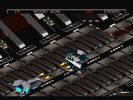
|
 game - isometric 3d - shoot them up game - isometric 3d - shoot them up
|
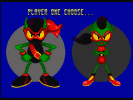
|
 game - platform game - platform
|

|
 game - dragster - motorbike game - dragster - motorbike
|
|
| 
|
 game - first person shooter - plane - shoot them up - war game - first person shooter - plane - shoot them up - war
|
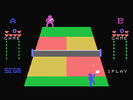
|
 game - sport - tennis game - sport - tennis
|

|
 game - maze - shoot them up game - maze - shoot them up
|
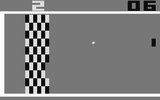
|
 game - ball and paddle - basketball - breakout - football - hockey - sport - volleyball game - ball and paddle - basketball - breakout - football - hockey - sport - volleyball
|
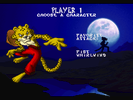
|
 game - 2d - beat 'em up game - 2d - beat 'em up
|
|
| 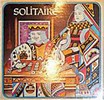
|
 game - card game game - card game
|
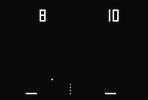
|
 game - ball and paddle - sport - volleyball game - ball and paddle - sport - volleyball
|

|
 game - shoot them up - space game - shoot them up - space
|
 |
 game - game -
|
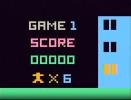
|
 game - elevator - platform game - elevator - platform
|
 RANDOM ADVERTS RANDOM ADVERTS
|
|
|







